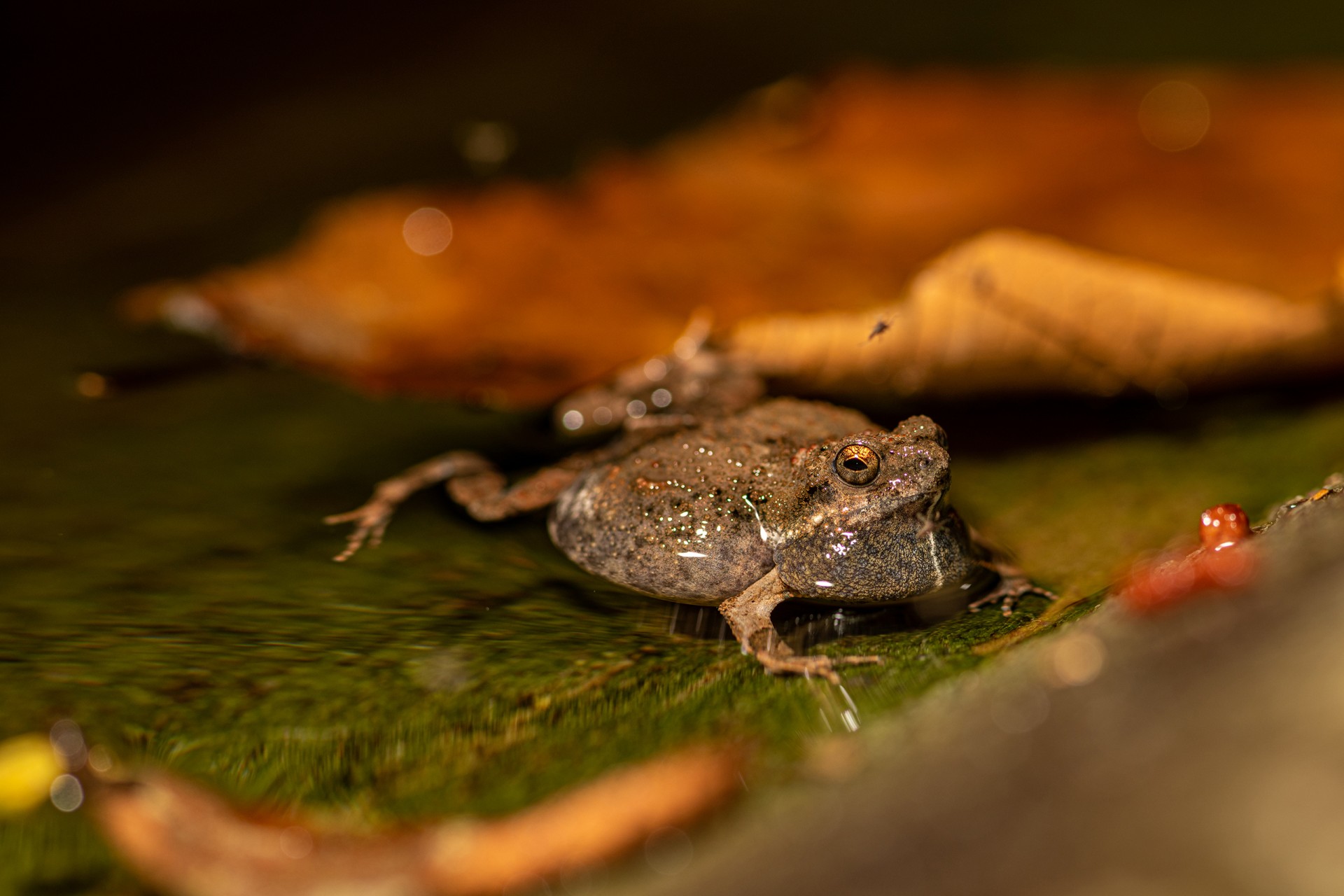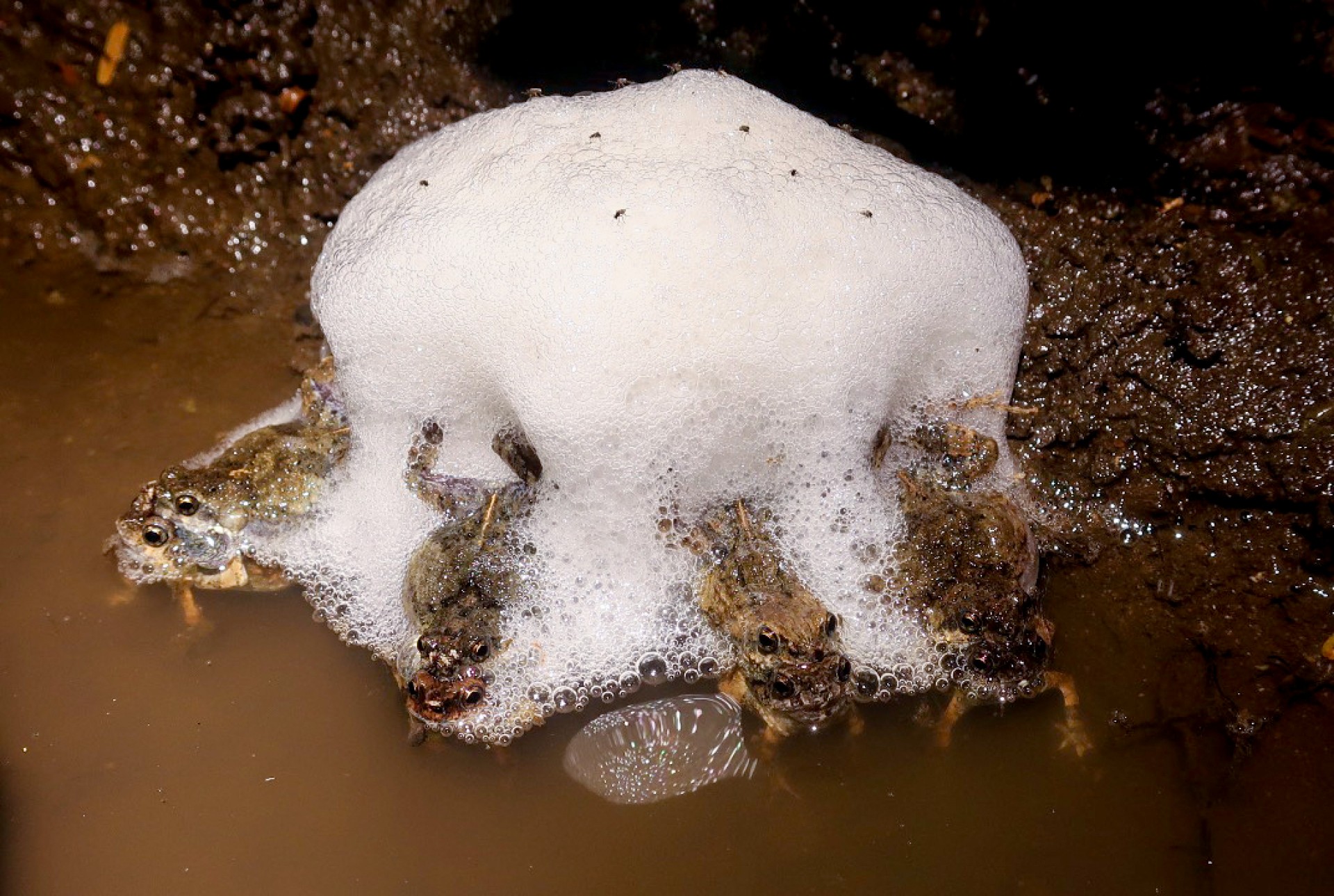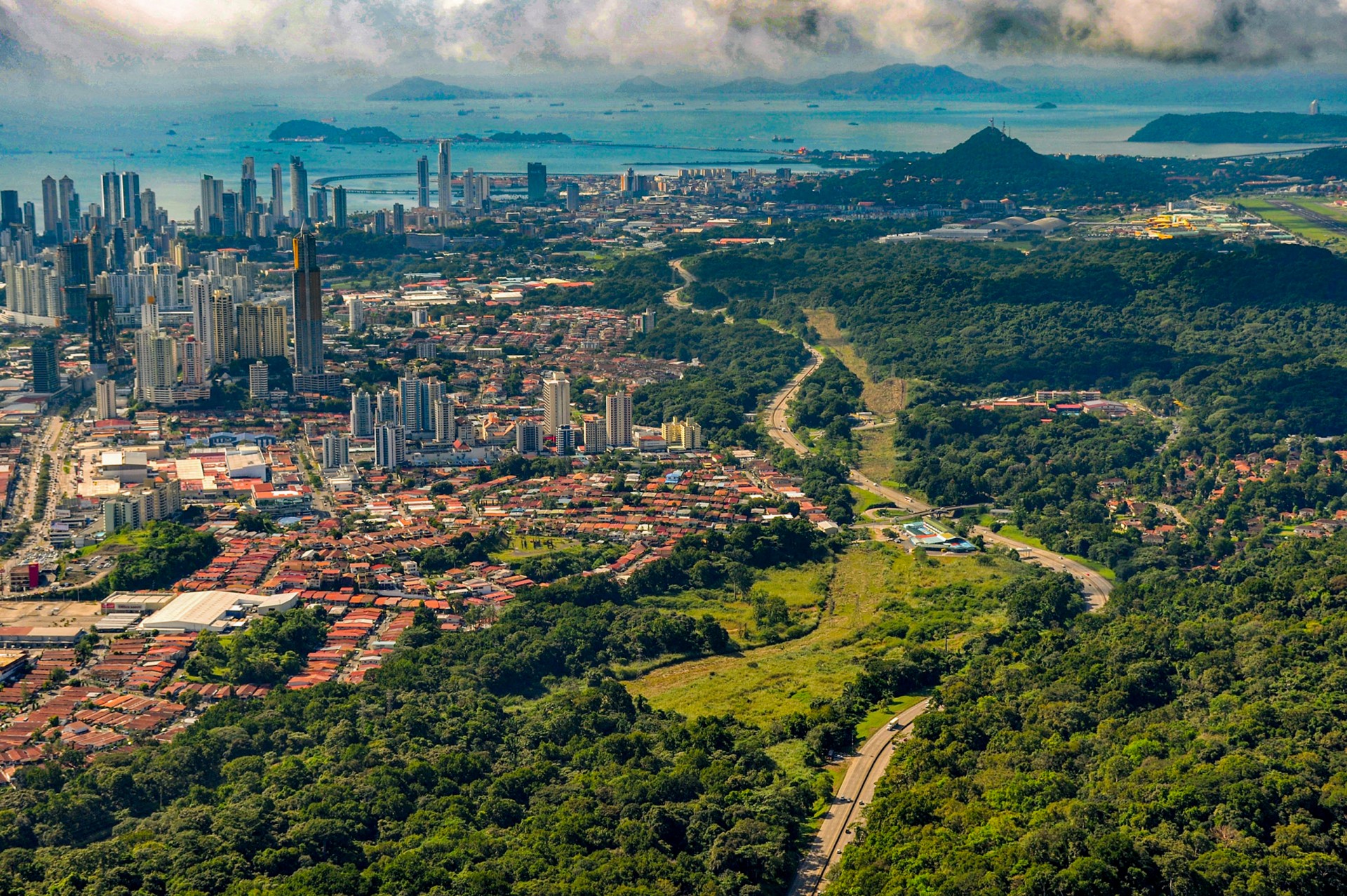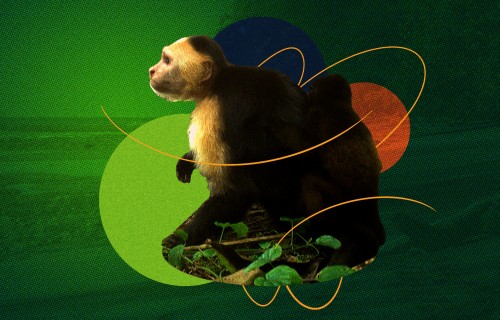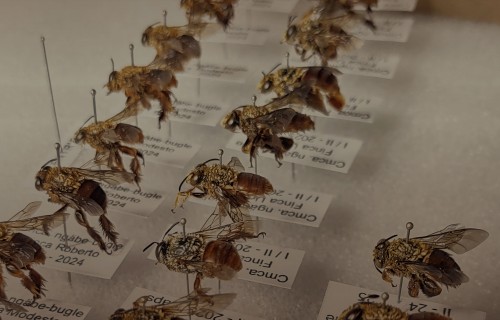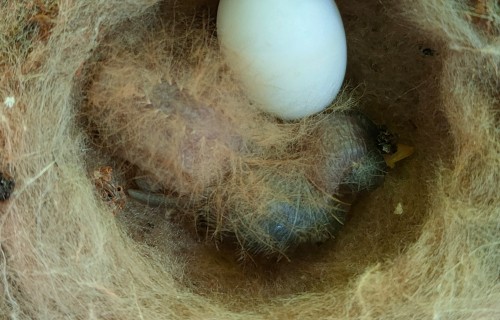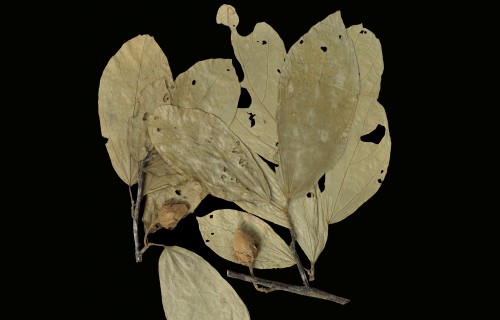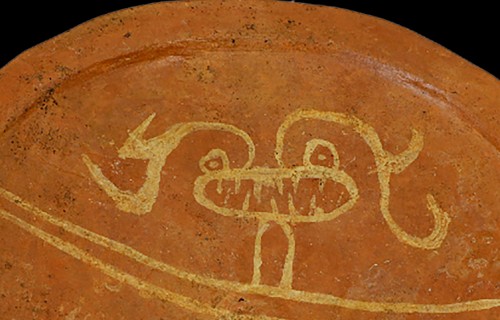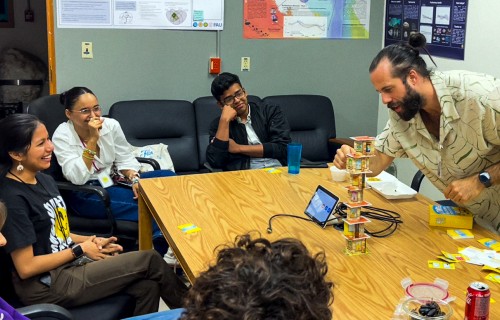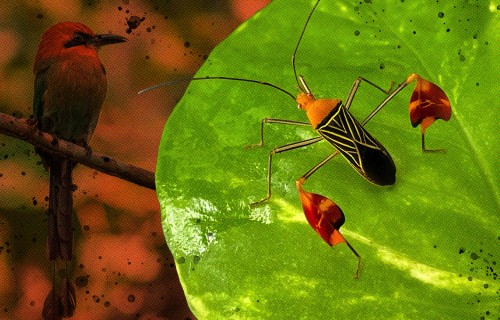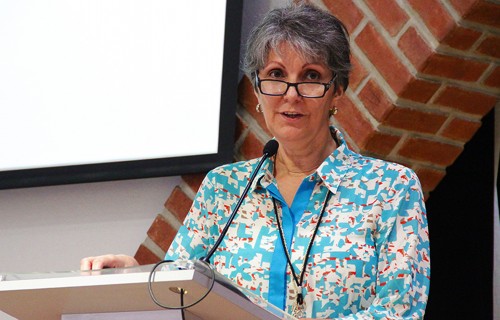A group of capuchin monkeys
caught on-camera with abducted
baby howler monkeys
Living Small
in a Big City
Túngara frog tadpoles that grew up in the city developed faster but ended up being smaller.
By: Rosannette Quesada-Hidalgo
Have you ever wondered how city life affects animals like frogs? A new study reveals that urban Túngara frog tadpoles develop faster —but end up being smaller — than tadpoles from forests, probably resulting in smaller adults. This might be an adaptation to warmer urban puddles with fewer predators or to constantly changing environmental conditions in the city.
With 8.2 billion people in the world, cities are constantly expanding, rapidly altering the environment. Animals that undergo complete metamorphosis, such as frogs, may face bigger challenges as they try to survive in new and changing conditions, because their young stages, the eggs and tadpoles, are more vulnerable.
Túngara frog tadpole
Credit: Nathanial Weisenbeck
Scientists at the Smithsonian Tropical Research Institute in Panama (STRI) compared the development of tadpoles of Túngara frogs (Engystomops pustulosus) in urban and forest conditions. Túngara frogs, whose mating calls sound like they’ve come straight out of a video game, lay their eggs in foam nests inside puddles. The eggs become tadpoles and, eventually, adult frogs. This study, published in Journal of Animal Ecology revealed that tadpoles that originated in the city developed faster than tadpoles from the forest. Tadpoles that grew up in the city were smaller compared to tadpoles that developed in the forest. Smaller tadpole body sizes found in urban conditions may partially explain the smaller body sizes found in adult urban males of this species.
Adult Túngara frog.
Credit: Steven Paton
Researchers including STRI fellows Andrew Cronin and Judith Smit, the STRI research associate Wouter Halfwerk, and the professor at the Amsterdam Institute for Life and Environment Jacintha Ellers, collected pairs of frogs (females and males) from puddles in the city and the forest. These pairs produced foam nests with eggs in the laboratory. The researchers divided each foam nest into two and placed half of the nest in an artificial puddle in an urban area and the other half in the forest. After 14 days in the puddles, scientists measured the tadpoles as well as different environmental conditions in the puddles, such as water quality and number of possible tadpole predators.
Foam nests laid by Túngara frogs.
Credit: Andrew Cronin
The puddles in the city are warmer and feature fewer predators compared to forest puddles. The researchers concluded that tadpoles in the city are smaller and develop faster, probably in response to these conditions.
The team also measured the vigilance behavior of tadpoles by artificially vibrating the puddles, simulating the presence of a potential predator. Tadpoles from the forest always responded consistently, while tadpoles from urban areas responded differently depending on where they were raised, possibly an adaptation to deal with more environmental variability in cities.
With cities expanding rapidly, it is important to understand how urbanization affects different organisms and their ability to respond to these changes. “Better predicting how cities impact species can help us create mitigation efforts to reduce the negative effects of urbanization,” said Andrew Cronin.
For another interesting story about Túngara frogs in the city go to Frog Sex in the City.
Studying the effects of urbanization on wildlife helps develop more effective strategies to reduce its impact. Photo: Panama City.
Credit: Steven Paton


